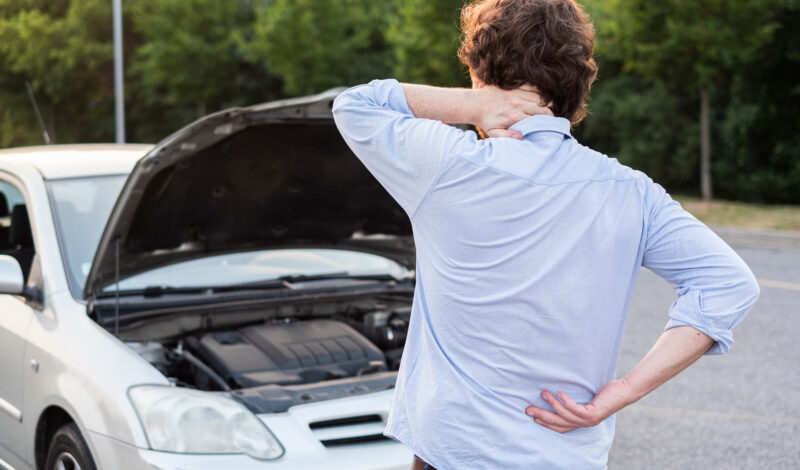Personal injury and bodily injury are terms frequently used in the aftermath of accidents or injuries. Although these terms are sometimes used interchangeably, they carry distinct meanings with specific legal implications. Understanding the nuances of personal injury and bodily injury is crucial for individuals seeking compensation after an accident. In this comprehensive guide, we will delve into the legal definitions, implications, and aspects of both personal injury and bodily injury.
Bodily Injury: Legal Definitions and Implications
Bodily injury commonly surfaces in criminal court cases when referring to the injuries sustained by a crime victim. For instance, victims of assault or violent crimes may suffer bodily injuries as a result of the attack. In an insurance context, bodily injury is a term used to describe physical injuries to a person. It refers to a form of insurance policy that compensates accident victims through coverage provided by the at-fault party.
In a legal sense, bodily injury is narrower than personal injury, typically implying physical injuries sustained by another person or in an accident. It encompasses a range of physical damages, such as cuts, scrapes, lacerations, bruises, burns, broken bones, and internal bleeding.
Personal Injury: Legal Definitions and Implications
Personal injury is predominantly used in civil cases and encompasses all costs a victim incurs after an accident or wrongful death. These costs include both physical and emotional damages, differentiating personal injury from bodily injury. The key distinction lies in the type of damages that can be recovered in a personal injury claim, which may include non-economic damages.
Common types of personal injury claims cover various accidents and social wrongs, including car accidents, truck accidents, motorcycle accidents, pedestrian accidents, slip and fall incidents, defective product claims, and medical malpractice claims. A personal injury claim allows victims to seek compensation for medical bills, rehabilitation costs, property damage, lost wages, mental and emotional distress, and pain and suffering.
Legal Aspects of Bodily Injury and Personal Injury
- Statute of Limitations:
- Bodily Injury: Typically arises in the context of motor vehicle insurance or premises liability insurance claims. Victims may seek medical coverage from a property owner after suffering injuries due to dangerous conditions.
- Personal Injury: State law requires victims to file personal injury claims within a specific period of time following the accident. Failing to do so within this statutory limitation may result in the loss of the right to seek compensation. Consult with your attorney on this timeline regarding the state where the accident took place.
- Liability:
- Bodily Injury: Pertains to cases where the insured is at fault in a car accident, compensating for injuries suffered by other parties.
- Personal Injury: Arizona and Nevada follow a rule of “comparative negligence,” allowing recovery even if the victim shares some fault for the incident. Check with your attorney on the rules for the state where your accident occurred.
- Burden of Proof:
- The burden of proof in a civil personal injury case is relatively low compared to criminal cases. Victims must demonstrate that the other party’s negligence caused the accident, focusing on compensating the victim for their losses.
Why Work with The Personal Injury Pros?
Regardless of the type of injury suffered, it is crucial to work with qualified personal injury attorneys who can navigate the complexities of seeking damages. The Personal Injury Pros specialize in personal injury cases and understand the tactics employed by insurance companies to minimize payouts. Having experienced lawyers by your side ensures you receive the maximum compensation for your losses.
What To Do After a Car Crash: A Comprehensive Guide
Did you know that there are more than 5 million car accidents in the United States each year, with 43% resulting in injuries? Knowing what steps to take after a car crash is crucial, as the aftermath of such an incident can be overwhelming. This comprehensive guide provides a step-by-step approach to what to do at the scene of a car crash to make the process more manageable.
1. Check for Injuries and Ensure Safety
If serious injuries occur, immediately call 911 and the police. Even for minor accidents, it’s best to contact the police, as some states legally require reporting accidents. If the police don’t arrive at the scene, filing a report at the nearest police office is necessary.
Move vehicles to a safe location if drivable, turn on hazard lights, and use flares or emergency cones to warn other drivers. Ensure everyone stays away from smoke or flames.
2. Exchange Information With the Other Driver
After confirming everyone’s safety, exchange information with the other driver involved. Limit communication and focus on gathering necessary details, avoiding admissions of guilt or discussions on insurance policy limits to prevent complications regarding liability.
Collect information such as:
- Driver’s license
- Registration
- Insurance company and policy number
- Telephone number
- Police officer’s name and badge number
- Police report number
- Witness contact information
- Vehicle make and model
3. Document the Accident Scene
Thoroughly document the accident scene by taking pictures, videos, or voice recordings. Capture the damage to both vehicles from various angles, the position of vehicles in relation to the road, skid marks, and property damage. Note street names, the exact time and date of the accident, and if possible, create a diagram of the crash scene.
Insurance companies like Allstate offer smartphone apps to help document accident details and upload pictures.
4. Contact Your Insurance Company
Regardless of fault, contact your car insurance company when another driver is involved. Failing to file a claim while the other driver does may result in a loss of insurance coverage for the accident. Find the claim information on your insurance card and start the claim process online.
5. Get a Medical Checkup
Seek a medical evaluation for potential injuries, even if they seem minor. Some injuries may not show immediate symptoms, and conditions like whiplash, concussions, back injuries, and post-traumatic stress disorder (PTSD) can manifest later. Take photographs of any visible injuries and their progression over time.
6. Contact The Personal Injury Pros
Consult with experienced personal injury lawyers after your accident for legal guidance. They can help navigate potential complications, such as determining fault and dealing with insurance companies. Choose attorneys specializing in personal injury cases with knowledge of state law.
Conclusion
After a car crash, handling everything on your own can be challenging. The Personal Injury Pros are here to assist you with your personal injury legal needs. Specializing in various areas, including car accidents, motorcycle accidents, and truck accidents, we offer a free initial consultation to help you seek the compensation you deserve. Don’t navigate the aftermath of a car accident alone—let The Personal Injury Pros guide you through the process.







